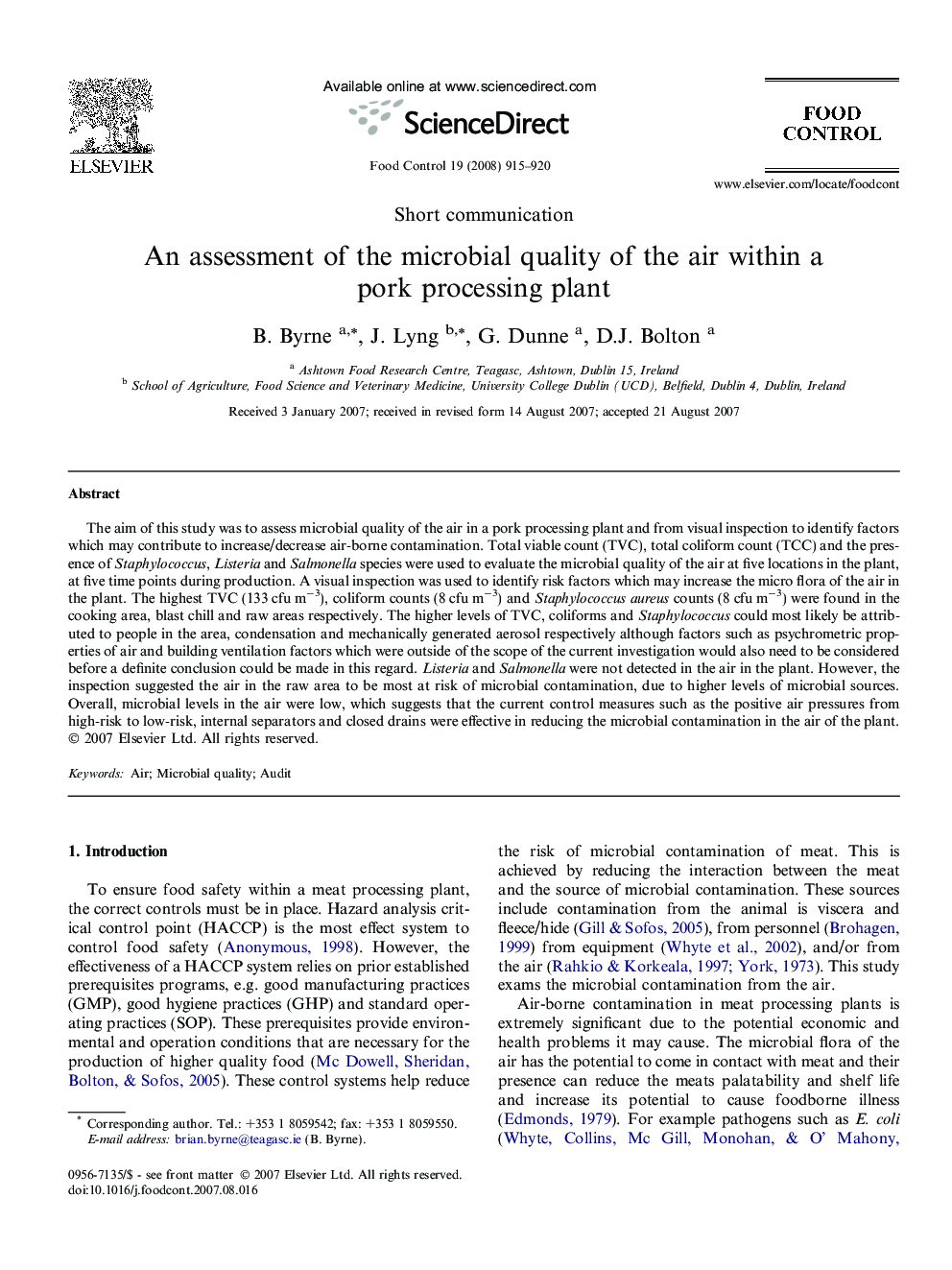| Article ID | Journal | Published Year | Pages | File Type |
|---|---|---|---|---|
| 4560376 | Food Control | 2008 | 6 Pages |
The aim of this study was to assess microbial quality of the air in a pork processing plant and from visual inspection to identify factors which may contribute to increase/decrease air-borne contamination. Total viable count (TVC), total coliform count (TCC) and the presence of Staphylococcus, Listeria and Salmonella species were used to evaluate the microbial quality of the air at five locations in the plant, at five time points during production. A visual inspection was used to identify risk factors which may increase the micro flora of the air in the plant. The highest TVC (133 cfu m−3), coliform counts (8 cfu m−3) and Staphylococcus aureus counts (8 cfu m−3) were found in the cooking area, blast chill and raw areas respectively. The higher levels of TVC, coliforms and Staphylococcus could most likely be attributed to people in the area, condensation and mechanically generated aerosol respectively although factors such as psychrometric properties of air and building ventilation factors which were outside of the scope of the current investigation would also need to be considered before a definite conclusion could be made in this regard. Listeria and Salmonella were not detected in the air in the plant. However, the inspection suggested the air in the raw area to be most at risk of microbial contamination, due to higher levels of microbial sources. Overall, microbial levels in the air were low, which suggests that the current control measures such as the positive air pressures from high-risk to low-risk, internal separators and closed drains were effective in reducing the microbial contamination in the air of the plant.
